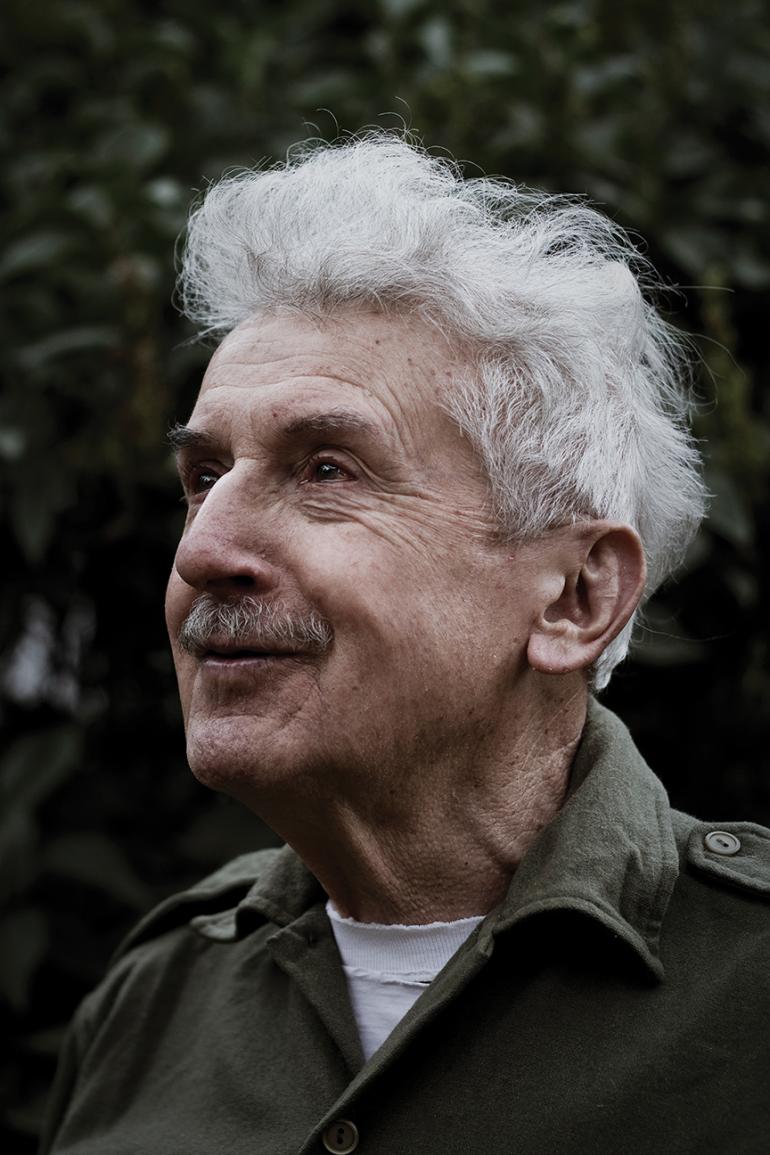Mountain Mystery
A cold, snowy stakeout in the Spanish Peaks.
For a long time I wanted to ski the 9,000-foot plateaus of the Spanish Peaks. In March of 1996, I made the decision to try it. To do this at Burnt Creek required wading the Gallatin River. Cold night temperatures slowed the tributary runoff, subsequently reducing the river flow—which I thought would make it low enough to wade across. I carried a heavy winter pack plus skis, poles, and double-leather boots.
Slush ice was anchored on the bottom of the river, which I soon learned displaces the water and raises its level accordingly. It’s easy to wade through slush, but the elevated river level was challenging—I damn near tipped over in the icy water. I was saved by my heavy pack, ice creepers that secured each carefully planted footstep, and a stout wading pole planted on the downstream side with each step.
Standing in the center of the river, it seemed twice as wide as when I started. With much difficulty I made it across. So far so good. I cached my waders and hoped the squirrels wouldn’t chew holes in them before I got back.
It was a long day’s work climbing the ridge that led into the plateaus. The snow was deep that winter. The windfall logs were covered over, which made off-trail cross-country skiing easier. I was using plastic snakeskin climbers, which are great in steep terrain with heavy loads, both going up and coming down. A Christmas gift from my son-in-law, those climbers are one of the most useful pieces of outdoor equipment I have. I could practically climb up the side of a barn with them on the bottom of my skis.
In my concealed position, I hunkered down to wait out the wolverines. Soon, the cold started to get to me.
When I finally made the top, a strong, cold wind was blowing out of the west across the plateau. It was obvious the wind had blown for days—the plateau was strongly scoured with a constant ground-blizzard of eroded snow and fine sand. One night of this was enough. I skied down into the Middle Fork of the Burnt Creek basin to get some relief from the wind and to build a fire. Afterwards, I skied up toward the cirque basin. At about mid-day I selected a large, thick, old-growth spruce tree for my night camp and dropped my heavy winter pack there.
I then skied up the drainage two miles toward the headwall of the basin. Near the toe of the annual snow avalanche path, I came upon some wolverine tracks. They climbed up into the headwall and circled back to where I stood. I followed the tracks and studied them through binoculars, trying to figure out what the wolverine was doing. I finally found two tunnels in the snow at the low point of the cirque. The tunnels were well within the avalanche run-out zone, above 9,000 feet in elevation. They were about six feet apart and 14-16 inches in diameter. Elk and wolverine hair and fur dander were plastered around the entrances.
The snow was about six feet deep at this point and I guessed the wolverine might be down there in a natal den with kits. This was a heavy snow year—I knew the wolverines had to dig deep to get at snow-covered carcasses and I suspected there was a dead elk lying under the six feet of snow. The wolverines were eating the carcass while at the same time raising their kits.
Wolverines breed in June and July, with implantation of the fertilized egg in December or January and the kits subsequently born in March. The snow den is usually deserted in May with the spring thaw. I knew that if I was ever going to get photos of wolverines, I had better take advantage of this opportunity. So I backed off to a place where I could view the tunnels without disturbing the den. My camera was an old, manually operated 35mm and it needed good light to produce a good photo.
In my concealed position, I hunkered down to wait out the wolverines. Soon, the cold started to get to me. I’d stay motionless for an hour and then ski out of sight from the den entrances and flail my arms and run in place to generate body heat. Then I’d sneak back to my camera spot and hunker down once again. After a few rounds of this, it started getting late and I started getting colder. It began to snow lightly. It was about an hour-and-a-half ski back to my pack, but the route was all downslope and I knew I could follow my track with the light of a headlamp. I waited a bit longer, then finally gave it up—but not before tying an orange ribbon to the top of an alpine fir near the den holes. I figured I’d return in the morning, and the ribbon would help me locate the holes if the drifting snow covered them up.
Headlamp on, I skied down to my pack in the dark. I found the old spruce just as the new snow began to hide my tracks. The tree was thick with dead branches. Using a small handsaw, I cut out a place for my bed next to the trunk of the tree. Then I tramped down the snow with my skis and laid down live spruce bows for my bed and saved the dry dead branches for a cooking fire. After building a fireplace base with larger branches, logs, and tree-bark slabs, I had a good fire going above three feet of packed snow. Soon the pot was boiling with sliced polish sausage, minute rice, prunes, and raisins. When it was sufficiently cooked, I pulled it off the fire and added powdered milk and sugar. This “slumgullian stew” is a cheap, hot meal that is simple to prepare, goes down easy, and provides much-needed fat for heat through the long, cold night.
The snow was coming down harder, so I rigged my homemade 3mm, 8’x10’ grommeted Visqueen shelter to keep the snow out as I slept. I put on all of the clothes I had with me: two union suits of long underwear, down pants, jacket, nylon wind suit with hood and pants, and a heavy wool hat. I allowed the small fire to burn down and crawled into my down sleeping bag with a nylon bivy-sack cover that has served me for 30 years. I placed my double-leather ski boots inside the bag to keep them from freezing and settled in. Although it is very important to drink large amounts of liquids during winter trekking, I try to shut off drinking toward the end of the day. That way I can sleep through the long night without getting up to urinate, which is quite an ordeal during snowstorms.
In my 47 years of traveling the Montana mountains, I’ve only seen a wolverine twice.
I slept well and got up at first light. My breakfast was mixed dry cereal with hot water and powdered milk. I try to drink as much warm water as I can hold in the morning—it goes down easy and warms the body up. I thought about the prospect of skiing two or more hours back up to the wolverine den in 12 inches of new snow, with more falling every hour. But I was due home that night, so I decided to turn around and begin the long trek out. The new snow helped slow me down on the steep descent to the Gallatin River, where I had crossed in the beginning.
In July, I made a trip back up into the basin and easily found the plastic flagging I’d tied to the top of the alpine fir. It was 12 feet above the ground. At the den site was a neat, four-inch thick matt of elk hair, four feet by five feet, with no skin attached. I poked through the elk hair matt and found only one small shard of chewed bone. The wolverines must have consumed, under the six feet of snow, all of the elk tissue, skin, bone, guts, stomach, and intestinal contents. I searched a 100-yard circle of the area and could not find any long bones, skull, teeth, or hooves. They must have eaten everything or carefully hidden what was not consumed.
In my 47 years of traveling the Montana mountains, I’ve only seen a wolverine twice and one of those was five miles from that very spot in the upper basin of the North Fork of Burnt Creek. I was rifle hunting for elk when a wolverine came loping along on a contour elk trail. When he was directly below me, about 90 feet away, he caught my scent, became excited and began to run forward, then backward, then forward again. He finally located me and hurried on his way out of sight on the bare ground.
I consider it a rare privilege to see a wolverine. I hope this story helps our biologists with further understanding of wolverine behavior.
This story originally appeared in our Spring 2005 issue. Joe Gutkoski, a legendary Montana outdoorsman and conservationist, died in August of 2021 at the ripe old age of 94.
Tribute to a Titan
Joe Gutkoski will be remembered for his impressive wilderness resume. He climbed countless peaks, shot numerous elk, and disappeared into the backcountry for days at a time with little else to keep him warm but a tarp and a cheap sleeping bag. He’ll be remembered for his service in World War II and his 32 years with the US Forest Service, 13 as a smokejumper. But perhaps most admirably, he’ll be remembered for his unwavering tenacity in standing up for what he believed in—wilderness.
Joe was ferocious in his efforts to keep wild places intact. As a landscape architect for the Forest Service, he fought battles from the inside. He was a man known for butting heads with, and constantly pushing back against, his superiors. From 1964 on (the year the Wilderness Act was passed), when Joe transferred to the Gallatin National Forest, that tension revolved almost entirely around the Greater Yellowstone Ecosystem.
Despite what one may think from reading the Forest Service mission statement, Joe’s opinions about keeping the Gallatin Range unhindered by roads and clearcuts were not shared by his bosses. One of his more renowned accomplishments—and there are many—came when he discovered the agency’s plan to connect Paradise Valley and Gallatin Canyon, by building a road between Tom Miner Basin and Hwy. 191 near Big Sky. Joe raised hell inside the department, and after multiple contentious meetings, the plan was tabled. Had the thruway been built, the Gallatin Range would be split in two.
Throughout his career, Joe’s desire was not one of collaboration or “economic opportunity,” but one of unconditional protection of wildlife corridors and habitat, including that of the grizzly bear and buffalo. “Wildlife can’t advocate for itself,” he would say. “We need to give the animals a stronger voice.”
Joe passed away on August 5, 2021, the day after his 94th birthday. While there’s an undeniable void left behind, his legacy lives on as strong and intact as the wild places he fought for. We’ll miss you, Joe. May your hunting be bountiful, your water cold and clean, and your landscapes unhindered. Rest easy. —Corey Hockett

















